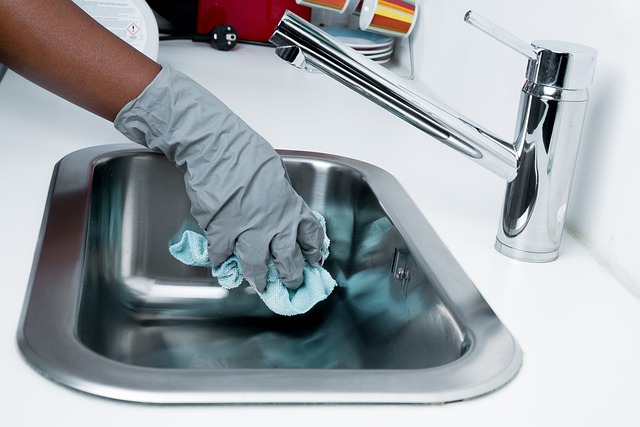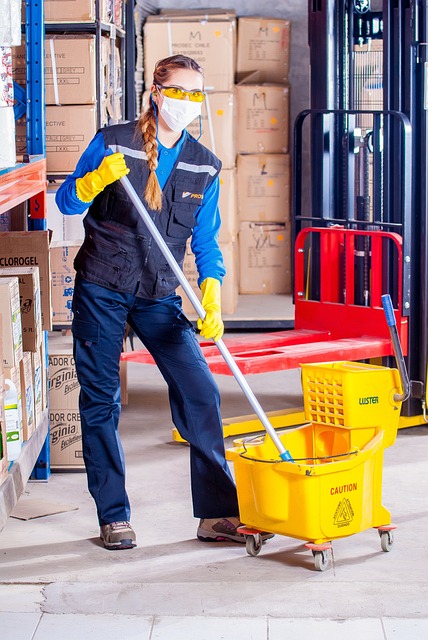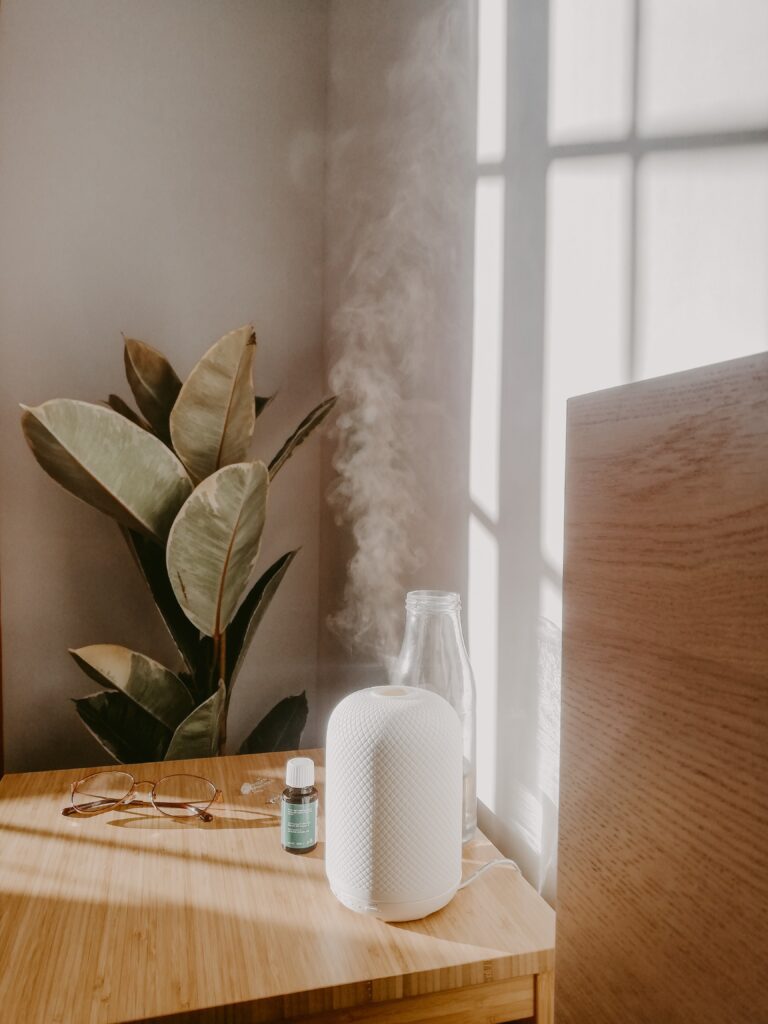Have you ever stopped to think how many toxic chemicals are in the average home? Here at SimpleHolisticWellbeing we are all about awareness as a mindfulness exercise. What about using this awareness on our physical environment like when we are teaching our kids about mindfulness?
Over 1 000 chemicals have been identified by the Environmental Protection Agency (EPA) as potentially harmful to human health. Only a few have been regulated. Without even realising it, we are regularly exposed to harmful chemicals through the products we use in our homes.
In order to protect you and your family from toxic chemical exposure, the first step is to learn which products contain harmful chemicals and take steps to avoid them.
We will identify some of these toxic items, and look at the dangers of these chemicals and how they affect our health and environment in this article. Join us as we explore how many toxic chemicals are in the average home – there’s no better time than now!

Alternatives with Non Toxic Ingredients
I’m sure you will be amazed at how many toxic chemicals are in the average home and want to reduce or remove as many as possible. I know it is high on my priority list.
If you just want to get started with changing them for better alternatives we looked at easy, natural ways to clean your home and how to reduce toxic chemicals in other SimpleHolisticWellbeing articles.
If you want to know more about the what and why, keep reading.
how many toxic chemicals are in the average home? A lot! they are everywhere
When answering how many toxic chemicals are in the average home, the first place to start is to understand the quantum of the problem. We use many toxic chemicals in our homes every day and there are over 80 000 on the market today.
Many of these chemicals are linked to a variety of health concerns, including cancer, reproductive issues, hormone disruption, and more.
As toxic chemicals accumulate in our bodies over time, this is known as bioaccumulation. The longer we are exposed to these toxins, the more they accumulate.
From cleaning products to barbecue fuel, cosmetics and gardening products, harmful chemicals are present in everyday items. This scenario is a ticking time bomb, that does explode.
What are the more common ones?
If you look around your home I bet you can find most of these, they really are that common. Here we look at what they are and what the known issues are, so you can work out how many toxic chemicals are in the average home, or your own home.
Bisphenol A, or BPA
This stuff is everywhere and that is why it is top of the list when looking at how many toxic chemicals are in the average home.
The chemical compound Bisphenol A, also known as 4,4′-isopropylidene diphenol, is used in clear plastics – often transparent plastics that are easily moulded into consumer products like baby water bottles, eyeglass lenses, food containers, DVDs, hygiene items and toys.
It is hard to believe how many toxic chemicals are in the average home in the form of products containing BPA.
BPA exposure is concerning as it leads to multiple health issues by binding to oestrogen receptors and altering growth, reproduction, repairing of body cells and foetal growth and development.
Laundry detergents
To be honest we almost put this one first on the list when looking at how many toxic chemicals are in the average home. I mean, most people do laundry, right?
Laundry detergents can be categorised by their enzyme content as “cationic,” “anionic” or “non-ionic,” all of which can help in removing stains and ground-in dirt.
Accidental ingestion of cationic detergents can result in severe symptoms such as burns and possible holes in the oesophagus, nausea, vomiting, shock, blood in the stool, convulsions, coma, diarrhoea and skin irritation.
Non-ionic detergents are less hazardous as they contain non-toxic ingredients. However, these can still cause irritation to the skin and eyes or heightened sensitivity to other chemicals.
Asthma symptoms can become exacerbated due to an increase in exposure to significant amounts of detergent, while accidental swallowing of these products commonly leads to household poisonings.
Bleach
Another super common cleaning product and that is why it is high on the list when looking at how many toxic chemicals are in the average home.
Household bleach comprises of sodium hypochlorite in varying concentrations ranging from 0.7% to 5.25%, with water making up the majority of the solution. It is usually considered comprising of non-toxic ingredients and non-corrosive even if ingested.
However, exposure to chlorine bleach liquid or vapour can burn human tissues, cause discomfort, breathing difficulties and irritation to asthma patients, cause irritation to the skin, eyes, nose, and throat, and fluid build-up in the lungs.
Direct contact with the bleach can also lead to dermatitis.
When ammonia is combined with toxic bleach, it creates a hazardous gas known as chloramines.
Similarly, when an acid is mixed with chlorine bleach, which is commonly found in products such as toilet bowl cleaners, dish detergents, and drain cleaners, it produces chlorine gas.
Exposure to chlorine gas, even at low levels, can lead to respiratory issues, breathing difficulties, pneumonia, and vomiting.
In extreme cases, exposure to very high levels of chlorine gas can result in death.
It is crucial to avoid these dangerous combinations.
Drain Cleaners
This cleaning product is a go-to when trying to avoid calling a plumber and that is why it is also high on the list when looking at how many toxic chemicals are in the average home.
These dangerous substances contain lye (strongly alkaline (caustic) solution), caustic and corrosive chemicals that could pollute the air in your home, cause burns to the skin and eyes, inflammation of lung tissues and even blindness in severe cases.
These cleaners are hazardous and swallowing a small amount could cause severe chemical burns in the throat, food-pipe, damage the airways and stomach and may even cause death.
Carpet or Upholstery Cleaners
More toxic cleaning products that are super common and hence on the list when looking at how many toxic chemicals are in the average home.
Carpet cleaning products contain harmful chemicals such as Perchloroethylene and naphthalene, which have been linked to the development of cataracts and liver damage when exposed to them for prolonged periods.
Perchloroethylene, specifically, has been found to be carcinogenic and can result in various health issues such as dizziness, skin irritation, headaches, kidney problems, neurological damage, and other health complications if exposed to it for shorter periods.
Bait traps for insects
Dealing with insects is a really common problem so that is why it is on this list when looking at how many toxic chemicals are in the average home.
Bait traps for insects include avermectin, indoxacarb, sodium tetraborate decahydrate (borax), trichlorfon, sulfluramid, fipronil, and hydramethylnon.
These insecticides are frequently found in insect baits used for controlling ants, dung beetle, moths, crickets, and cockroaches.
Unintentional ingestion could result in abdominal pain, skin rash, vomiting, nausea and diarrhoea.
Windshield washer fluid
Not everyone has a car, but this one is still super common so that is why it is on this list when looking at how many toxic chemicals are in the average home.
The windshield washer fluid typically contains three chemicals, namely methanol, ethylene glycol, and isopropanol.
When these substances are ingested simultaneously, they can cause a range of harmful effects such as irritation in the nose, mouth, throat, nervous system, liver, kidneys, heart, and brain damage, as well as drowsiness, unconsciousness, and even death.
It is important to be cautious of the potential dangers posed by these chemicals.
Air fresheners
Keeping the air smelling fresh seems trendy these days so that is why it is on this list when looking at how many toxic chemicals are in the average home.
Air fresheners are known to contain phthalates and formaldehyde, which are dangerous and harmful substances that can cause cancer and irritation to the skin, eyes, and throat.
Besides this, they also contain other dangerous materials that can be harmful to the nervous system and cause pulmonary oedema (making it hard to breathe).
When purchasing air fresheners, it’s important to look out for labels that indicate danger or poison.

How to reduce our Exposure
So we have established there are a large number of these in the home. Sometimes we do need to use them. If so, here are ways to reduce exposure to them.
Bisphenol A, or BPA
It is advised to keep plastics at a cool temperatures and refrain from heating them in the microwave or the dishwasher.
Heating these plastics can result in BPA and other chemicals leaching into the food.
If you are buying water bottles, it is recommended to choose glass or stainless-steel options. Similarly, when opting for reusable coffee and tea mugs, the same guidelines should be followed.
Laundry detergents
It is important to ensure that laundry products, particularly liquid laundry packets, are kept away from children and pets to avoid any accidents.
Always store these products in their original packaging, with the label intact, and in a secure location once their use is complete.
Bleach
It is important to store bleach in its original bottle and not transfer it to other containers.
To avoid the risk of bleach poisoning, keep it out of reach of children and pets and seek medical attention immediately if you suspect poisoning.
When handling (using) bleach, wear protective gloves and eye protection to prevent skin and eye contact. Ensure proper ventilation in the room where bleach is used to avoid inhaling dangerous fumes.
Use low concentrations of chlorine bleach, usually 5.25% or 6% sodium hypochlorite.
Keep children and pets away from areas where bleach is used as ingestion can be harmful.
Before using bleach on a surface, test a small area to ensure it does not cause damage.
Drain Cleaners
It is important to ensure that all necessary precautions are taken to prevent harm caused by chemical drain openers. This includes wearing appropriate personal protective equipment (PPE) to safeguard oneself.
For instance, certified eye protection should be used to protect the eyes from harm.
A full-face shield is even better and is preferred by some professionals due to the added protection it provides.
Furthermore, it is recommended to wear good-quality nitrile gloves to protect the hands from the contents of the drain, and heavier-duty gloves should be used when using a mechanical drain cleaning machine.
Coveralls should be worn at all times to protect the skin from exposure. If the chemicals soak through the coveralls, they should be removed immediately and the exposed area should be rinsed for at least 15 minutes.
When working with chemicals, it is important to minimize splashing and ensure proper ventilation in the work area.
Carpet or Upholstery Cleaners
Before buying any carpet or upholstery cleaner, or hiring a professional to do it for you, it is important to always check their ingredients.
If the ingredients are not listed on the bottle, it should be taken as a warning sign and checked online before making a purchase. Similarly, if the cleaner will not tell you (or does not know themselves) what the cleaning products are, then choose another provider.
Many cleaning agents are dangerous and can be flammable or corrosive, which can put the user at risk. Proper training is essential to know how to handle these products in case of an emergency.
When handling chemicals, it is crucial to wear protective clothing such as helmets, gloves, and eye protection. It is also important to use these carpet cleaners properly and know what to do in case of exposure or a fire/explosion.
When dispensing these cleaners, it should only be done in a well-ventilated area and into clearly labelled containers. These containers should be kept secure when not in use, away from food areas and sources of ignition.
Bait traps for insects
Store these bait traps in closed containers when not in use as the toxins in these baits could build up in the home environment.
Windshield washer fluid
Children may mistake a jug of bright blue liquid for juice or soda, especially when their parents are driving and distracted by winter weather.
Although the bottle of windshield wiper fluid may have a child-resistant closure, it is not completely child-proof, and a curious child in the back seat may open it.
So, ensure these washer fluids are out of reach of children. It is possible for adults to accidentally ingest windshield washer solution when it is transferred to a different container.
While it might seem like a good idea to have some on hand for emergencies, it is important to avoid storing it in a beverage bottle as the blue liquid can be mistaken for a drink.
It is dangerous to put toxic chemicals in food or drink containers as it can lead to accidental poisoning of oneself or others.
To prevent this, it is crucial to keep windshield wiper fluid away from children, lock it in its original container, and store it out of sight and reach of pets.
If traveling with the fluid during winter, it should be kept in the trunk for safety.
Air fresheners
To prevent any harm, it is crucial to keep the air fresheners away from the reach of both children and animals.
Furthermore, it is equally significant to steer clear of any chances of ingestion or skin contact with the air fresheners.
Additionally, it is advisable to avoid open flames around products that have the potential to catch fire.
So, how many toxic chemicals are in the average home? A lot!
General Tips to safeguard ourselves
The feeling of how many toxic chemicals are in the average home can be very daunting.
As dismaying as the problem may seem, there are many simple ways to protect ourselves from these hazards:
- It is advisable to choose a product that is less harmful, especially if there are children in the house (see more in the next section of this article).
- Chemicals should be kept in a locked cabinet that is out of reach of children, and liquid chemicals should be kept separate from dry ones.
- When using chemical products, always follow the instructions provided and wear recommended protective equipment.
- It is also recommended to work in a well-ventilated area. If using chemical cleaners, it is best to wash the cleaning rags before reusing them or disposing of them.
- To easily identify chemicals, it is best to keep them in their original packaging and avoid storing them in unlabelled containers or containers that may react with the product.
- It is advisable to make home made cleaners and detergents which are free of toxic ingredients and safe for human health and the environment.
- It is crucial to dispose of specific household chemicals correctly. Some products, including ionisation type smoke alarms, rechargeable batteries, single-use batteries, lead acid batteries, fire extinguishers, distress flares, and expired medications, require special methods for disposal. If there are fewer than ten ionisation type smoke alarms, they can be disposed of in regular household waste. However, if there are more than ten, advice should be sought from the local fire station.
- Rechargeable batteries should be returned to the supplier or a council-provided battery recycling facility, while single-use batteries should be recycled. Lead acid batteries should be taken to the waste station provided by the council, and fire extinguishers should be returned to the local fire station.
- The manufacturer’s guidance should be followed for distress flares.
- Finally, old, expired, or unwanted medications should be returned to a local pharmacist.
Conclusion
In today’s mechanised life where everything is readily available, be it processed food cans, or readymade bottled cleaning products, we don’t even realise how many toxic chemicals are in the average home.
We should all be aware of the potential danger of toxic overload in our living spaces, and take action by making small but meaningful changes.
Switching to natural cleaning products comprising of non-toxic ingredients and avoiding single-use plastics are good places to start.
In doing so, we can ensure a safe and healthy environment for ourselves, our families and the planet.
So that is a lot of detail on starting to work out how many toxic chemicals are in the average home. Please let us know how many you found in your home in the comments below.





